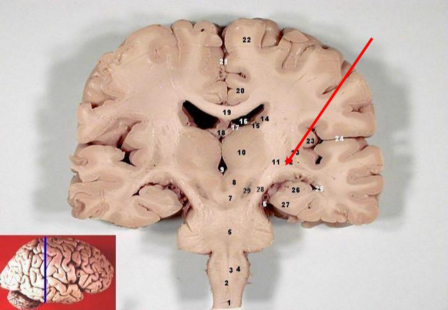Scanning the Brain
By Jeffrey Laurence, M.D.
October 22, 2007—Highly active antiretroviral therapy (HAART) saves lives—to be exact, 2.8 million years of life since 1989 in the U.S. alone, based on national surveillance data published last year. HAART’s effectiveness is mitigated to some extent by problems arising from drug resistance and drug side effects, but HIV infection may have other debilitating consequences as well. One issue of growing importance involves changes in mental function ranging from mild cognitive impairment to frank dementia, a problem addressed by amfAR-funded scientist Beau Ances writing in the September issue of the Archives of Neurology.
Before HAART, up to one-third of people with AIDS developed mental changes substantial enough to alter their capacity to complete normal daily activities. As HAART became more widely available, the occurrence of frank dementia fortunately declined, but in its place came a range of less serious but still significant and common mental impairments.
Dr. Ances and colleagues noted that the standard way of assessing functional changes in brain activity, using magnetic resonance spectroscopy (MRS) and measurements of certain brain chemicals, may have led doctors to believe that HAART was having a greater positive effect in the brain than was actually occurring. It appeared that HAART could return these abnormally elevated chemical markers to the normal range in most people. Yet clinically, abnormalities in mental function continued to occur in some patients. Clearly a more sensitive indicator of HIV’s effects in the brain was needed. Dr. Ances’s group has now identified one such test.
Working at the University of Pennsylvania, Dr. Ances used the standard MRS scan, but with a twist. Instead of analyzing the brain chemicals typically targeted in MRS, he examined changes in three chemicals that are elevated in nerve tissues under inflammatory or oxidative stresses—the kinds of conditions induced by HIV. These molecules—creatine, a marker of high-energy metabolism; lactate, a measure of cell activity under conditions of low oxygen; and lipid, affected by oxidative stress—were examined in an area of the brain known as the lenticular nuclei (LN). Dr. Ances’s group chose to study the LN because previous studies had found that chemical and immune abnormalities in that region of the brain are strongly linked with HIV-associated mental impairment. HIV-negative volunteers were evaluated along with HIV-infected individuals who were either cognitively normal or mildly or severely impaired.

Brain section
The red arrow points to the lenticular nuclei. The inset shows the location of this brain cross-section.
(Photo credit: Wikimedia) **Licensing terms below. |
Dr. Ances discovered that lipid and lactate are more sensitive markers for cognitive changes than commonly measured chemicals, and that increasing levels correlated with increased cognitive impairment. Whether HAART included drugs such as tenofovir or tipranavir, which readily enter into the brain, or agents such as AZT, indinavir or lopinavir, which have much poorer brain penetrance, it did not correct these abnormalities.
The authors concluded that a viral sanctuary capable of inducing inflammation most likely persists in the brain despite use of antiretroviral drugs capable of blocking HIV growth in other areas of the body. And they called for further research into the development of other types of drugs capable of protecting the brain against such assaults, an area of active interest to amfAR-funded scientists.
**Licensing terms for cross-section photo.
Dr. Laurence is amfAR’s senior scientific consultant.